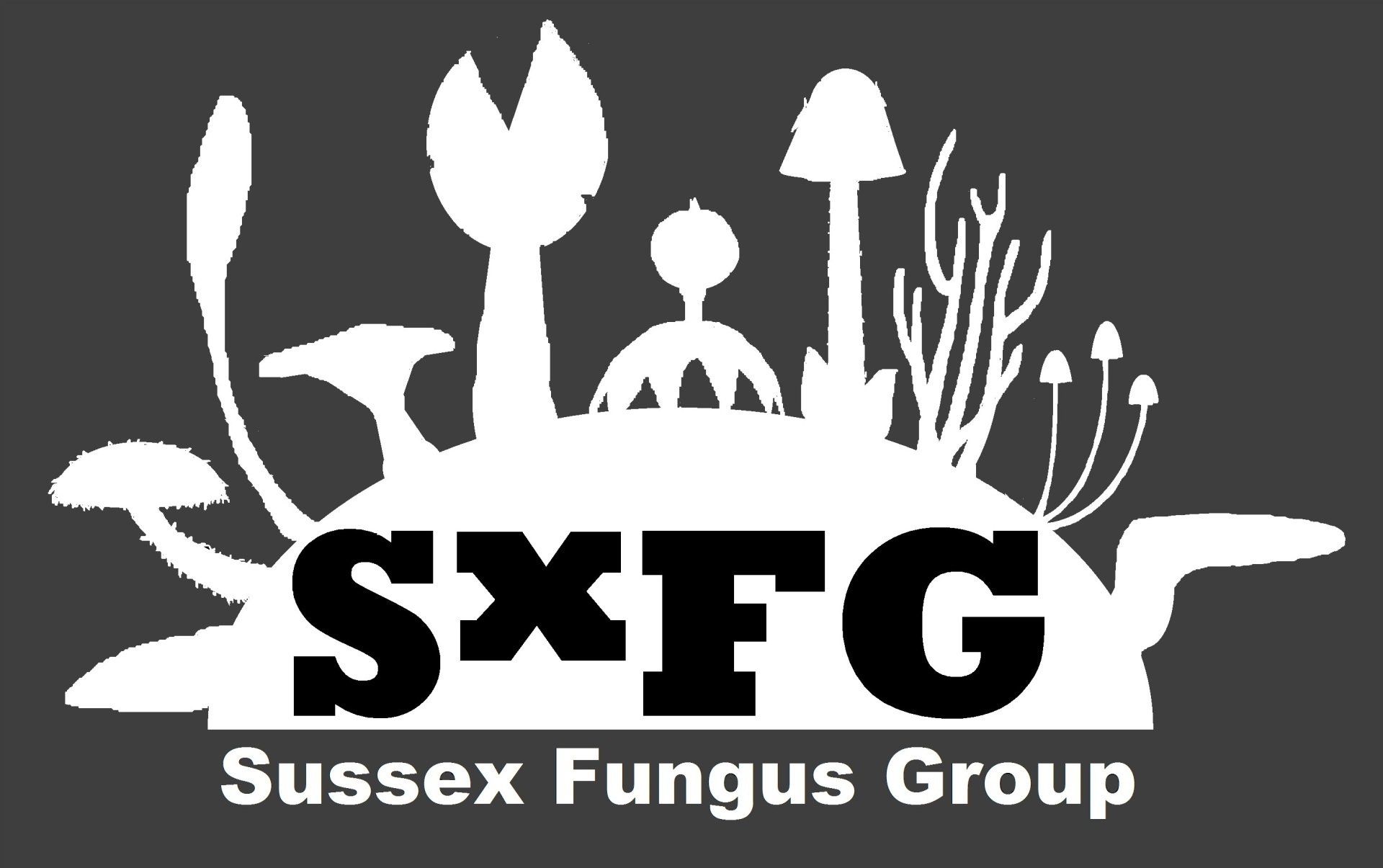The Fungi of Ebernoe Common
Martin Allison
In 2018 I was commissioned to undertake a three- year mycological survey at the Sussex Wildlife Trust’s Ebernoe Common. The purpose of the survey was twofold. The first part of the project was to assess the distribution of fungal tree saprotrophs across the reserve, recording their locations via GPS, and providing information on their relationship to the trees, alongside advice on their conservation. Secondly, a series of five established quadrats were chosen in which to record all mycological taxa, allowing a comparison of the fungal biodiversity across a broad range of woodland habitats.
It is recommended that a mycological survey covers at least three seasons to allow for fluctuations in fruiting caused by the vagaries of the British weather. This proved correct across the three study years, with year one producing very few fungi, year two with abundant fruiting, whilst year three was akin to an ‘average’ recording season. The latter season was hampered both by travel restrictions and financial restraints brought on by the pandemic, but one or two visits were still possible, albeit on a voluntary basis. The survey will now continue into a fourth year during 2021.
Tree Saprotrophs
All tree and wood-dwelling species were recorded, but the survey primarily concentrated on a list of Beechwood and Oakwood indicators found within the Guidelines for the Selection of Biological SSSI’s. (Bosanquet et. Al. 2018). The Beechwood associates are originally described in an English Nature report from 2004 (Ainsworth, A. M. 2004). Of the 30 species listed in the guidelines, thirteen have so far been identified at Ebernoe Common during the current survey, with several others as historic records. The survey results include significant species such as Tiered Tooth Hericium cirrhatum, Clustered Bracket Inonotus cuticularis, Beeswax Bracket Ganoderma pfeifferi, Golden Powdercap Flammulaster limulatus s.l. and Mealy Oyster Ossicaulis lignatilis. The list of oakwood species is much shorter and includes the more widespread species Beefsteak Fungus Fistulina hepatica, Chicken-of-the-Woods Laetiporus sulphureus alongside Hen-of-the-Woods Grifola frondosa, Oak Bracket Pseudoinonotus dryadeus, and Zoned Rosette Podoscypha multizonata. All these have been recorded during the three years. Another genus, Pluteus, collectively known as Shields, was added to the criteria as indicators of long-standing dead wood habitat. Seven species have been identified from the visits to date. Several Pluteus species are restricted to semi-natural ancient woodland habitat.
Quadrat Surveys
Five 50 x 50m quadrats were selected for survey in varying habitats ranging from diverse oak and beech stands, open beech over bare ground/leaf litter, dense holly and beech stands and shaded Holly and Oak stands. All plots supported some large diameter standing and fallen dead wood. Between the first and second recording seasons, the variations in fruiting became obvious, with 154 species recorded in 2019, compared to just 58 in 2018. The oak woodland has proved the most diverse mycologically to date, supporting a wide range of ectomycorrhizal species across various genera. A selection of interesting fungi recorded so far includes Russula zvarae, R. decipiens, R. olivacea, Lactarius pallidus, Mycenella salicina, Hygrophorus mesotephrus, Hydropus subalpinus, Cortinarius olivaceofuscus and Tricholoma acerbum.
Management implications
The majority of Ebernoe Common may be described as wood pasture, supporting open-grown veteran and semi-veteran trees, specifically beech and oak. Over many years the woodland had begun to deteriorate due to past neglect, leading to a closed canopy, and it has been the aim of the Sussex Wildlife Trust to restore the open nature of the reserve, partly by grazing with rare breed cattle. This priority wood pasture habitat is akin to major sites such as the New Forest and supports a similar range of rare and local species, not least amongst the bats, which depend on the dead wood habitat for breeding and roosting.
Habitat management on nature reserves often fails to take fungi into account. Unfortunately, improving habitat for other taxa can cause unintentional damage to the moist shady and undisturbed conditions required by most fungi to thrive. Other modern threats include the use of heavy timber felling and extraction machinery, whose deep ruts can sever mycorrhizal links between fungi and their tree hosts, whilst frequent brash fires should be discouraged. It is therefore important to ensure that fungi are accounted for in conservation management planning, so that their habitats receive adequate protection. This cannot be done unless the presence and location of the fungi are known, leading to the importance of initial fungal surveying and reporting. I see this aspect of the commission as the third and possibly most important reporting outcome of the current survey.
Acknowledgements
Several SxFG members have helped with the survey by either joining me on my visits or alerting me to fungi they have noticed. Amongst these I would like to thank Nick Aplin, Jim & Dawn Langiewicz, Mark Colvin and Jim & Janet Howell. A special thanks should also go to Graeme Lyons whilst employed as the SWT ecologist.
References
Ainsworth, A. M. (2004). Developing tools for assessing fungal interest in habitats 1: beech woodland saprotrophs. English Nature Report Number 597.
Bosanquet, S.D.S., Ainsworth, A.M., Cooch, S.P., Genney, D.R, & Wilkins, T.C. 2018. Guidelines for the Selection of Biological SSSIs. Part 2: Detailed Guidelines for Habitats and Species Groups. Chapter 14 Non-lichenised Fungi. Joint Nature Conservation Committee












